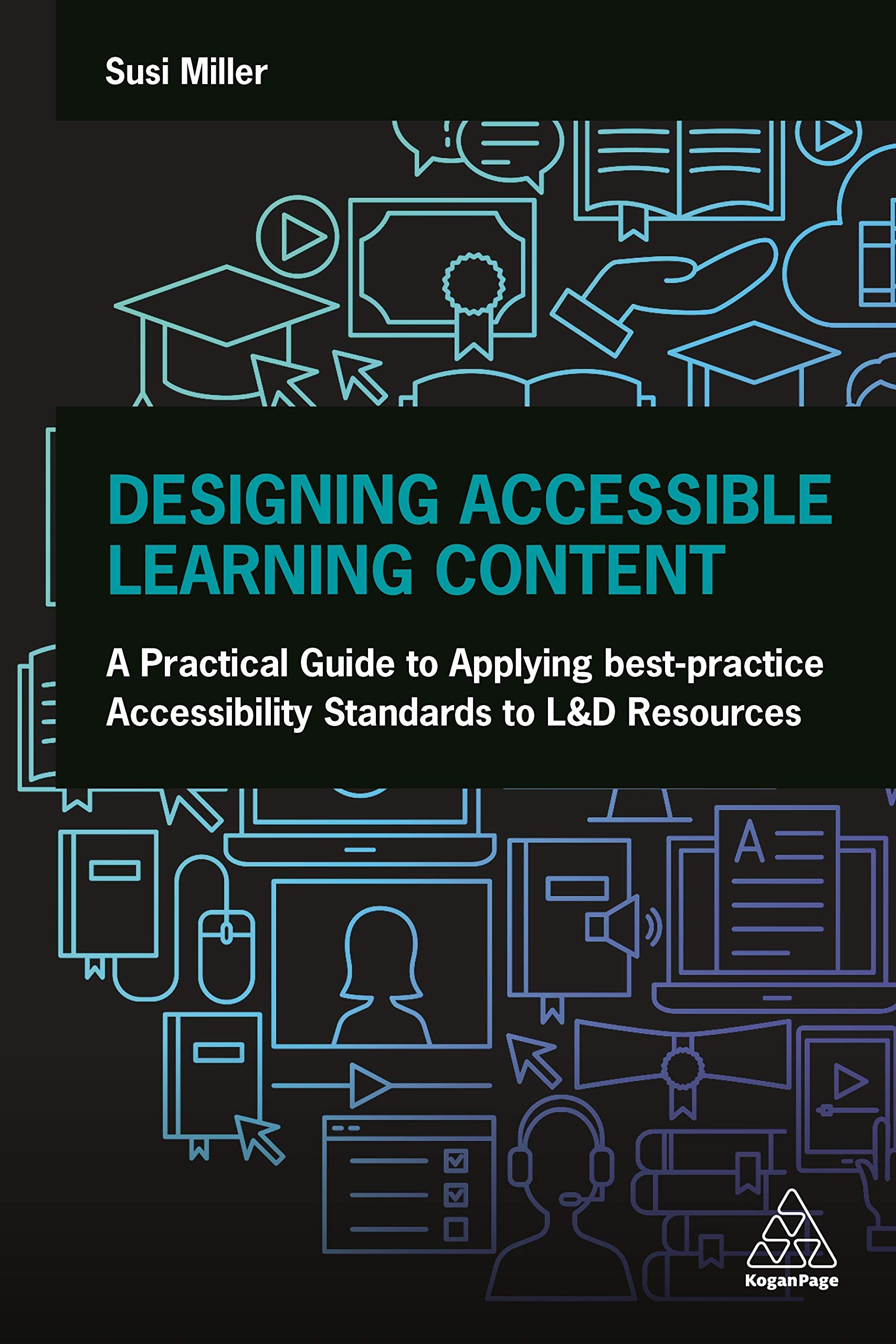HE/Public Sector Update: Accessible eLearning dos and don'ts with Susi Miller
This FREE webinar took place on 22 June 2021
For this HE/Public Sector update webinar, we welcomed Susi Miller, eLearning accessibility expert and author of 'Designing Accessible Learning Content' to share her insights about accessibility dos and don'ts.

Susi shared examples of accessibility learning done well, and key points of her 'eLearning Accessibility Framework' to help you make accessibility decisions and improvements at your institution.
AbilityNet's senior accessibility consultant James Baverstock joined Susi on the webinar. He provided a refresher about accessibility and a timely outline of the key responsibilities for public sector organisations, as the Public Sector Bodies Accessibility Regulations (PSBAR) for the 23 June deadline.
Watch the webinar (and download the transcript):
Webinar FAQs
This webinar will be of particular interest to those who work in a higher or further education setting, those working on learning and development teams and creating online content in the public sector.
A transcript and slide deck are available below. Find out more about AbilityNet webinars in our webinars FAQs.
Useful links
- Sign up to our next free webinar in our AbilityNet Live webinar series
- Learn more about accessible mobile apps in AbilityNet's training course: Accessibility testing in mobile apps and sign up to our HE/FE training courses
Find out about eLearning modules for higher and further education institutions >>
Get training in accessibility legislation
Please note: To help you get even better value this year, we have a 10 for the price of 8 bundle on our training courses for you and your team to enjoy. You can also
save 10% this month on individual training courses using the discount code AbilityNetTraining10.
Q&As from the webinar
Susi and James answered many questions on the webinar itself, and for those we ran out of time to address, you can find the answers below:
Q: I often see 12pt size sans serif fonts recommended for use in websites and documents. Is this formalised anywhere within WCAG or other guidance? I seem to recall the RNIB 'See It Right' guidelines had it but that was many years ago.
James: WCAG does not contain specific guidance on font size and there is not an absolutely standard recommendation. This is partly because not all fonts have letters that are the same size, but 12-14 pts minimum is a general good practice. The CDDO guidance on Publishing accessible documents suggests using a minimum font size of 12 points while GOV.UK’s guidance on accessible communication formats suggests 14 point text size as a minimum.
Q: What’s the best option/app to make the copy of a course booklet accessible when transcribing to Word is not an option due to time? Pages are not 100% clear and the booklet has around 100 pages. I use Adobe Scan, but is not detecting all words.
James: If you have Acrobat Pro, you can use the function to enhance scanned documents that is available under “Tools” > “Scan & OCR” and see if that improves the results. You can also correct the recognised text by navigating through suspect text found by Acrobat and correct it as necessary. Unfortunately, this is still potentially quite time consuming but may be quicker than transcribing to Word.
Q: Is there a way to check your content for screen readers without having access to the software i.e. JAWS?
James: The free ANDI accessibility tool may be useful as it displays the accessible name and description that a screen reader should announce.
Q: Any advice/pointers to resources/research on how to effectively present bilingual information in accessible formats?
James: This article from Nomensa on tips and techniques for multi-lingual website accessibility may be helpful.
Q: Do you have advice about the best captioning tools?
- Subtitle Edit
- Amara
- Simon Says
- You may also be interested in our AbilityNet training course How to produce accessible videos.
Q: What is the tool for quizzes you mentioned, Susi? Please could you provide a link.
Susi: The tool I was referring to is called CourseArc. It isn’t specifically a tool for quizzes but more a standard eLearning authoring tool. I think it does a good job with quizzes because it automatically provides alternatives for non-accessible quiz question types like drag and drop questions.
Most of the leading authoring tools such as Storyline, Lectora, Adapt and Evolve and many others such as Xerte Online Toolkits which is popular in HE have many quizzing options which are accessible.
For example, Lectora lists these quiz question types as being WCAG compliant in their tool:
- True/False
- Multiple Choice
- Rank/Sequence
- Number Entry
- Short Answer

- Essay
- Fill in the Blank
Q: Is your book (pictured, right) available as an e-book or available on the kindle?
Susi: Yes it is. You can get the e-book or a paperback and e-book bundle on the Kogan Page website and you can get a kindle edition on Amazon.
Q: What are your thoughts on Learning Management Systems? Any you feel should be avoided? Any stand out as better for accessibility?
Susi: Just as with authoring tools this is quite a tricky one to answer as there are pros and cons of so many of them. I normally refer people to the following research to find out more.
Check out:
Section 508 Compliant Learning Management Systems from the eLearning Industry
Analysis of Accessibility of the e-Learning Platforms According to the WCAG 2.0 Standard Compliance (Oct 2018)
A new one which was recently recommended by some colleagues in the USA, which sells itself on accessibility, and might be worth having a look at is YesLMS.
Q: Do you recommend elearning audits for accessibility?
Susi: I assume that the question is referring to full WCAG 2.1 audits? I recommend full audits if they are needed for compliance assurance, for example, to make sure that the content complies with WCAG 2.1 Level AA for Public Sector Bodies Accessibility Regulations purposes. Full audits have the benefit that content is thoroughly tested with a range of assistive technology and browsers and that they are carried out by accessibility experts with a full knowledge of all of the WCAG requirements which can sometimes be quite technical and difficult to understand. They can have the disadvantage however, that they test learning content developed using authoring tools as if it were standard website content developed by people who have access to and good understanding of code. This sometimes leads to full WCAG audits focusing on coding issues which content authors do not have the ability to change or correct.
Q: NoCoffee Vision Simulator seems to be missing from the Google Chrome webstore for downloading extensions. Is there another way of accessing this?
Susi: You can download it for Firefox.
Useful links from the webinar
Upcoming Webinars
-
11 Jul 2024 - 13:00
-
10 Jul 2024 - 13:00
-
4 Jul 2024 - 13:00
-
5 Jun 2024 - 13:00


